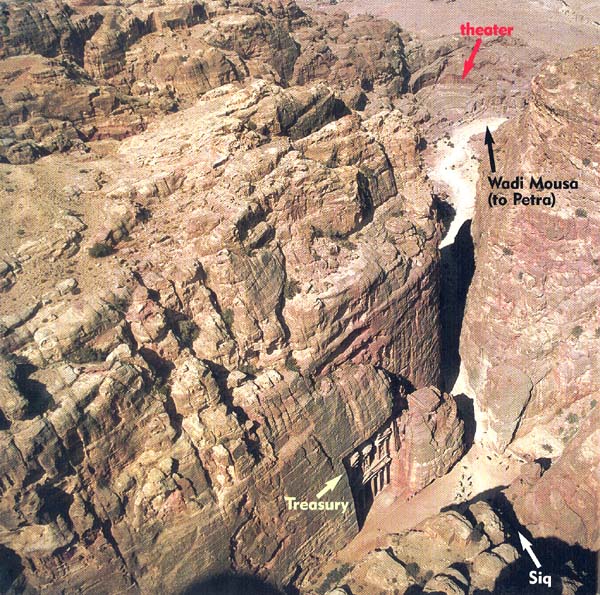Image Details

Photo by Jane Taylor/Sonia Halliday Photographs
For all its grandeur, Petra’s Treasury building often seems dwarfed by the magnificent desert landscape. Surrounded by imposing mountains, the city’s ruins can only be reached through a narrow, rocky corridor known as the Siq, which debouches into a larger canyon at the Treasury. The path to Petra then winds northwest to the city’s amphitheater (see photo of amphitheater). The road then turns due north, following the Wadi Mousa. Petra’s enormous Roman-style amphitheater was probably constructed by the Nabataean king Aretas IV (4 B.C.–27 A.D.). Some of its classical features may be the result of renovations carried out by the Romans after they annexed Petra in 106 A.D. The 19th-century adventurer Johann Burckhardt claimed that the theater could seat around 3,000 people, but modern scholars estimate its actual capacity at somewhere between 7,000 and 12,000.
